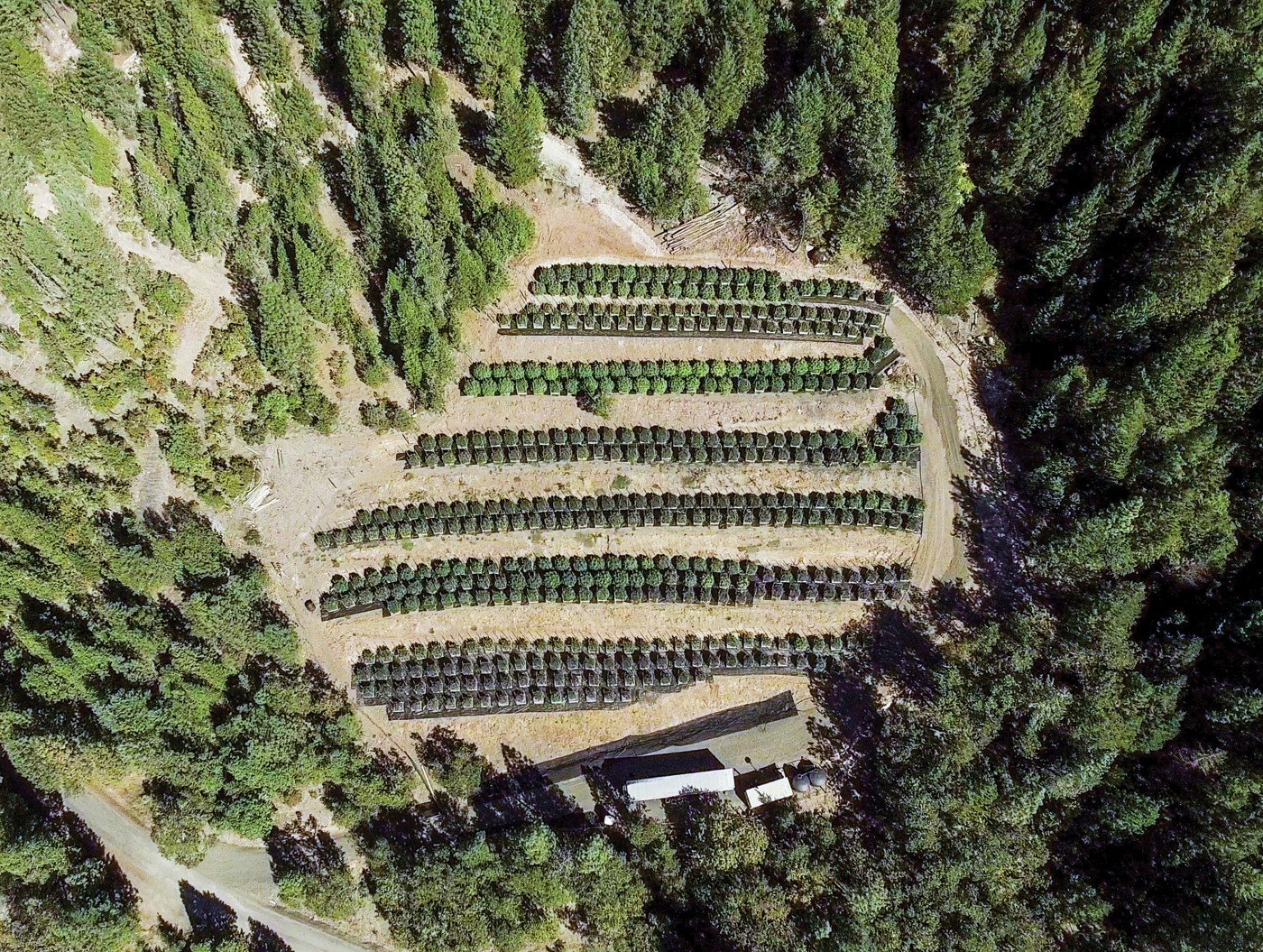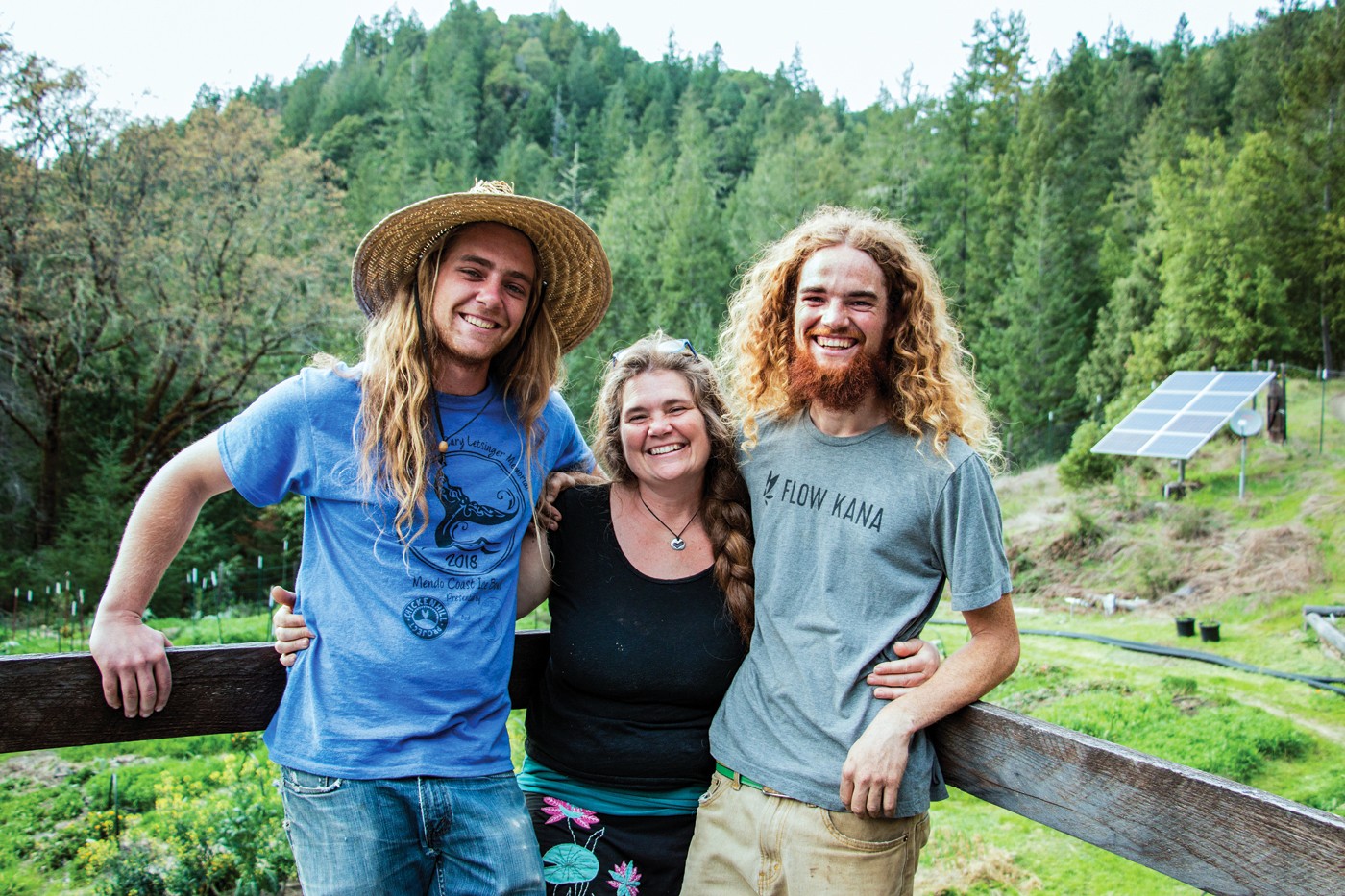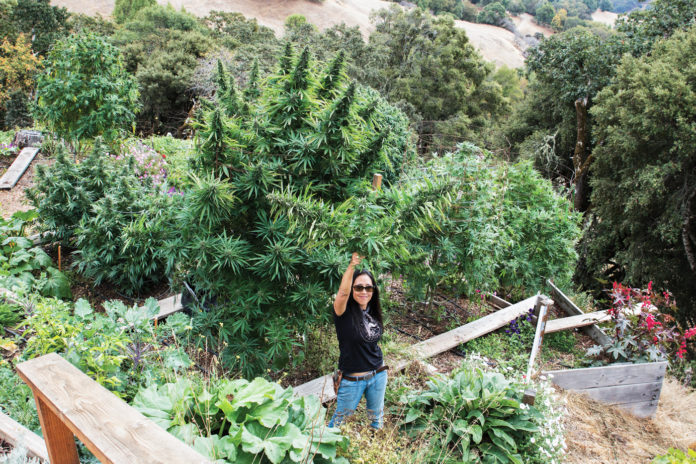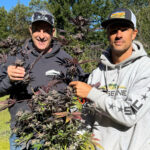Ever visit a sushi restaurant and wonder whether the “red snapper” on the menu might be tilapia grown on a fish farm in parts unknown? In both the black and legal cannabis markets, it’s a more convoluted game of bait and switch. Brokers and retailers will do whatever it takes to move product, so if that bag of “Kush” needs to be an “OG” to fill an order, then how does “Humboldt OG” sound?
Even more scandalous is the pernicious, long-standing practice of brokers selling cannabis grown outdoors as “indoor.” In doing so, brokers and retailers have been able to double-down on their profits by claiming outdoor weed is inferior and then selling their outdoor flower as “premium” indoor cannabis.
For years cannabis patients and consumers have been sold on the idea indoor cannabis is a superior product. For thousands of outdoor growers, it will be both a challenge and an opportunity to persuade consumers otherwise as the sun-grown market takes shape. Meanwhile, farmers are finding new and creative ways to market their flower and forging important new partnerships that could help them survive in cannabis-flooded regional markets.
A legacy of outdoor farming
Worldwide, the legacy of cannabis is tied to plants that were grown full-season outdoors, contending with wind, weather, pests, animals, and other threats. Through experimentation and patience, farmers successfully have planted strains from one part of the world in similar climates and latitudes around the globe. In particular, the cultivators in California’s Emerald Triangle have grown and bred strains from around the world since the 1960s, when the “back-to-the-land” movement took hold in Northern California and pioneering farmers started mixing cannabis in with their backyard gardens.
Today, cannabis grown full-season in the great outdoors—or “sun-grown,” as it is marketed—represents a unique opportunity for farmers who have the experience and tenacity to nurture fickle plants over a six- to eight-month rollercoaster of a season. Veteran farmers and aficionados still consider high-quality sun-grown herb some of the tastiest and most effective medicine, with high concentrations of terpenes and a rich spectrum of cannabinoids that result from exposure to the full spectrum of the sun’s rays for months on end. From a sustainability standpoint, too, sun-grown cannabis is a clear winner. But in today’s hyper-competitive, highly-regulated industry, most sun-grown small farmers are fighting an uphill battle.
Shivawn Brady is the vice president of regulatory affairs at Justice Grown, a cannabis company with operations in a half-dozen U.S. states, and a member of the Sonoma County Growers Alliance. Over the past decade, she has consulted on cultivation projects nationwide. She explained one of the biggest challenges for sun-grown cannabis farmers is the lingering stigma associated with the practice, even in California, where more than half of counties ban sun-growing. Nationally, most states require cannabis be grown indoors or in greenhouses. Taking a high-level, long-term view of cultivation in the United States, Brady sees opportunities for outdoor cannabis cultivation in the future but she believes the practice always will be concentrated on the West Coast.
“I could see outdoor cannabis cultivation in states with hemp programs and a rich history in agriculture. But if there is hemp, then cannabis growers see a risk [of cross pollination],” she said. “I’m also hearing from folks that paranoia about outdoor plants is too fierce right now in other states, but as anxiety falls, we might see [willingness to allow outdoor grows] open up. There is a lot of recognition of how much energy indoor systems use, and there is no reason we should be doing so much. So, as consciousness shifts and people start to understand these [outdoor] facilities aren’t a public safety issue, we will start to see more farms across the U.S.”
While there is little doubt farms in the Emerald Triangle have advantages in terms of legacy, genetics, experience, knowledge, and a number of other intangibles, bigger market forces are at play. In California, several regions of the state are prime areas for cannabis farming, and investors are placing big bets on large-scale operations. Almost any region where wine grapes grow provides a good environment for cannabis, because the plants thrive under the same conditions: hot days, dry summers, and cool nights.
Whether large or small, one of the biggest challenges for sun-grown farms is the glut of weed on the West Coast that has forced prices down to unprecedented levels. In Washington and Oregon, the average price for sun-grown cannabis has been cut in half over the past two years, from about $1,500 per pound to between $700 and $800 per pound. At the bottom end of the flower market, manufacturers of oils and extracts pay farmers as little as $50 per pound. In 2017 alone, Oregon growers produced 1.1 million pounds of flower, according to state regulators. Of that total, it’s estimated less than half was sold and consumed in the legal market.

Now that California’s regulated recreational industry is up and rolling, the state’s 3,000-plus licensed growers are expected to produce several million pounds of flower annually, and the competition for shelf space and survival is sure to be intense.
Market realities call for new strategies
In every legal state, indoor flower accounts for the vast majority of plant product sold at retail. However, craft cannabis farms on the West Coast have begun marketing “sun-grown” flower and extracts to appeal to the same consumers who shop at organic markets and support environmentally conscious companies. Outdoor strains that have been grown for decades in the remote mountains and valleys of California and Oregon exhibit THC and terpene levels that rival or exceed indoor strains.
So the challenge now is to sell new consumers and patients on the unique, nuanced qualities of sun-grown cannabis and its rightful place in the market. Tina Gordon, founder of Moon Made Farms in southern Humboldt, relishes the task.
“Cultivating in full sun is the sum of all the parts—full sun, night sky, fresh air and water—and it’s the soil native to this area that is nurtured, and so there is a lot of intention to how the plants are cultivated,” she said. “With indoor[-grown], you have artificial light, municipal water, and a simulation of the natural environment. So, it’s easy for people to understand how and why ingesting sun-grown is better for them than ingesting indoor.”
In order to help market sun-grown cannabis in Oregon, the Oregon SunGrowers Guild began hosting the Terpene Cup competition in 2016 to recognize and reward some of the best outdoor growers in the state. Sun-grown cannabis typically has more robust and complex terpene profiles than indoor cannabis, and the competition provides a platform for highlighting the desirable characteristics.
Hedging bets with biomass
Among the ways sun-grown farms have been able to hedge their bets amidst the glut and declining prices is selling large portions of their crops to manufacturing labs. The labs turn the raw biomass—trim, smaller buds, and even whole plants—into distillate and extracts. Growers even have begun planting specific strains that produce lab-coveted terpenes and packaging their biomass in different grades for different manufacturing purposes.
Nate Ferguson, a master extractor and co-founder of Jetty Extracts in Oakland, California, said his company sources about 20 percent of its biomass from sun-grown farms, but some of the best-tasting and -smelling cannabis he has seen lately comes from mixed-light greenhouses. He explained sun-grown plants are at the mercy of the elements and more susceptible to mold, and thus can be difficult to source on a consistent basis. By contrast, greenhouse operations have more control over their environments—dialing in temperature, humidity, pest management, and other variables—and produce, on average, three harvests a year.
“When we first started, we were getting the trim the farmers dumped over the hill, but now we’re doing contracts where we get the whole plants, which is great because we are extracting twice as much in about half the time,” said Ferguson. “For more of a flavor-driven product, a lot of the fruity strains are good for extraction—the Clementines, Tangies, Jacks, and high-limonene strains. The earthy strains are darker [and thus less desirable] and more finicky, so it all depends on what you are going for.”
Also an issue for small, sun-grown farms: Many retailers operate their own flower cultivation facilities, making competition for shelf space a growing challenge.
“This is a tough thing for a lot of the [Emerald Triangle] folks,” Ferguson said. “Guys are coming up from San Luis Obispo, Salinas, and Santa Barbara and offering as low as $300 for a whole-plant pound. For the boutique-y, craft guys in the Triangle, we see prices anywhere from $300 to $1000.”
Debate within the industry encompasses two competing philosophies about the best way to structure a business in today’s hyper-competitive climate. Some argue having a vertical operation that includes everything from indoor-outdoor grows to manufacturing labs and retail shops is the way to win. Others insist specializing in excellence and consistency in one area of the supply chain is the best way to survive and thrive as the industry grows.
Changing focus
After growing medicinal product for ten years, Oregon’s Grown Rogue ventured into the recreational market and now is one of the bigger vertically-integrated operators in the state. The company is listed on the Canadian Securities Exchange and plans to expand into a national brand. Chief Strategy Officer Jacques Habra, a vocal advocate for sun-growing, said about 70 percent of the company’s sun-grown product is packaged for flower sales and the remainder becomes pre-rolls and extracts.
“The price point is low in Oregon, but people like our product a lot so the demand is there,” said Habra. “Sun-grown is the lowest-cost flower, so we use it for derivative product lines, too.”
The company operates two farms: Trails End in northern Jackson County and a newer farm in Manzanita Glen outside Grants Pass. Director of Outdoor Cultivation Seann Igoe said he likes to keep his crews lean and mean, so each farm has two dedicated farmers. Igoe floats back and forth between the farms. “I’m the leader but we are a team, so it’s similar to a kitchen where not one person is in charge of everything and we are all capable of doing most anything.”
Thus far, the farms and the brand appear to be on a good run. An Oregon lab recently confirmed Grown Rogue’s outdoor harvest included a strain testing at 35-percent THC, potentially breaking state records for outdoor cultivation. At the recent Grow Classic competition in Eugene, Oregon, Grown Rogue took first place in the Highest Percentage THC category, first place in Highest Percentage Terpenes, and third place in Growers Choice. Grown Rogue grows about thirty different strains and classifies them according to both name and the experience consumers can expect.
“Consumers in Oregon and California appreciate the science behind the strain descriptions and really want to know what strain they’re enjoying,” Habra said. “As cannabis goes mainstream, people may care less about strain names, but some people will always care.”
Habra said the experience categories are a work in progress. The company collects information about physical and mental effects via customer surveys. The feedback will help other users understand the specific effects of different strains. He cited an example: “I was focused and balanced, but it also gave me a lot of energy.”
Grown Rogue recently established a micro-business license that allows it to process and distribute products, and the company has been identifying and establishing strategic relationships with local farmers in the Humboldt region.
“There is a desire to know that the product came from an outdoor farm with the sun, earth, and land and pine trees and [other] things that influence the plant’s production,” said Habra. “There are some psychological differences when you know a plant is grown outdoors, with more terpenes and the sun powering the plant. There’s always going to be a lot of people who want to smoke the sun and not electricity.”
Small farms get savvy with marketing
In the Emerald Triangle, growers are developing standards for appellation of origin so consumers will be able to recognize strains coming from specific areas, much like the wine industry has turned Napa Valley and Sonoma into appellations known throughout the world.
Sun-grown cultivators face a big challenge—and opportunity—in the amount of education and marketing that will be required to reverse decades of bias favoring indoor flower. Many are accustomed to producing smaller crops due to terrain, regulations, and limitations set in place during the medical cannabis era. Justice Grown’s Brady said each small farm must produce at least 500 pounds in order to survive, a hefty increase from the 100 pounds necessary pre-adult-use legalization.
Two women who well understand the dynamics are Katie Jeane, founder of Emerald Spirit Botanicals, and Moon Made Farms’ Tina Gordon.

Katie Jeane has lived in Mendicino County for more than fifty years. Her farm resembles a traditional small farm, with a diverse array of vegetables, plants, and bushes intermixed with cannabis plots. Such “intercropping” or “companion planting” has been popular for decades, but in the newly regulated industry it’s becoming a rarity.
Gordon owns two forty-acre parcels in the southern Humboldt mountains and possesses county and state licenses allowing her to farm a half-acre of cannabis. She also maintains a small mixed-light greenhouse. Gordon estimated her yearly production at 500 to 1,000 pounds of flower and 1,000 pounds of biomass material.
As small- and medium-sized farms, Gordon’s and Katie Jeane’s operations allow little room for error. On the positive side, the women can maintain tight control and oversight of their staff and operations, and they can choose their strategic partners carefully. Both Moon Made Farms and Emerald Spirit Botanicals have another hedge in an extremely competitive market: a relationship with Flow Kana, one of the biggest champions of sustainable, sun-grown cannabis.
Located on the eighty-acre former Fetzer Vineyards property in Redwood Valley, California, the Flow Cannabis Institute is building everything it needs to process, test, manufacture, and distribute flower and other products from more than 100 partner farms. Its first functional facility is dedicated to processing, sorting, and packaging flower.
“Flow Kana has solved a lot of the challenges and issues that small farmers have been facing and has magnetized a talented group of people who found partners to support sun-grown,” said Gordon.
Willie’s Reserve‘s partnership with Flow Kana recently benefitted Gordon when country music star Margo Price chose one of Moon Made Farms’ cultivars, Pineapple Wonder, to debut her new flower line under the Willie’s Reserve brand. Gordon also understands the importance of a strong retail connection and bought a small stake in the Vapor Room, a cannabis shop in San Francisco. There, as much as 80 percent of flower selection is dedicated to cannabis grown full season under full sun.
“It’s all about partnerships right now and community building and strengthening to promote sun-grown,” said Gordon. “It’s also going to be really important to ensure the consumer that they’re getting something organic and clean and cultivated with intention.” She quoted Japanese organic farmer and philosopher Masanobu Fukuoka: “The ultimate goal of farming is not the growing of crops but the cultivation and perfection of human beings.”
Katie Jeane and her two sons, Joseph and River Haggard, subscribe to Fukuoka’s notion of farming and have a unique perspective on breeding, cultivation, and nurturing their plants. She grows about a dozen different strains but said she has an archive of many different seeds passed down to her over the years. She takes a spiritual path in her breeding and plant selection, talking to and listening to her plants, and even seeking guidance from them.
“Thinking about [competitors] would be stressful, so it’s not something I think about,” she said. “I focus on listening to the plants and figuring out what they want to bring forward, and how can we support them to grow in a beautiful way.”
For the past few years, she has focused on developing more balanced 1:1 strains, to deliver a more harmonious effect. “I’ve been reviewing lab tests for the last five years, and it’s interesting to see what cannabinoid profiles come out and how long it takes to stabilize them. That’s the really exciting stuff for me, where my passion is,” she said.
With a background in plant science, Joseph Haggard can discuss everything from homemade compost for heating the greenhouse to creating a holistic balance on the farm using companion plants and other natural solutions. He spends a good deal of time traveling to Emerald Spirit Botanicals’ retail partners to educate budtenders.
“I’m trained in biodynamic farming, so we incorporate some of those concepts. And the farm went through the Bronner family’s Sun and Earth Certification process,” he said. “When the cannabis is growing, we intercrop it with potatoes and onions and illicium, which is a habitat for beneficial insects. We work with various insects in our pest-management plan, so if anything damaging shows up then we have something to deal with it.”
Eying the future
Given the competition from large commercial operations cranking out thousands of pounds each harvest in massive indoor and greenhouse cultivation projects, craft farmers in the Emerald Triangle know they have little room for error moving forward.
“NorCal and Oregon grow the best outdoor cannabis in the world,” said Grown Rogue’s Habra. “But in California this is the beginning of price compression, so it will be interesting to see what happens to these highly-invested brands when the price plummets and surplus is the name of the game. It will be a major shift, just like in other states, so California is at the beginning of a cycle that will really rock the industry.”
What farmers of all stripes really are waiting for is federal legalization, so they can start shipping their creations to new markets across the country. Until then, it’s up to consumers to embrace sun-grown flower and the small farms that have cultivated plants outdoors for decades.
“It’s pretty challenging for small farmers to compete, but the market here in California is pretty sophisticated compared to other parts of U.S.,” Brady explained. “Folks in other parts of the country don’t have the heritage of boutique craft cultivators. So, if these farmers can hold on and develop their genetics and create some notoriety, they have a chance to succeed.”










